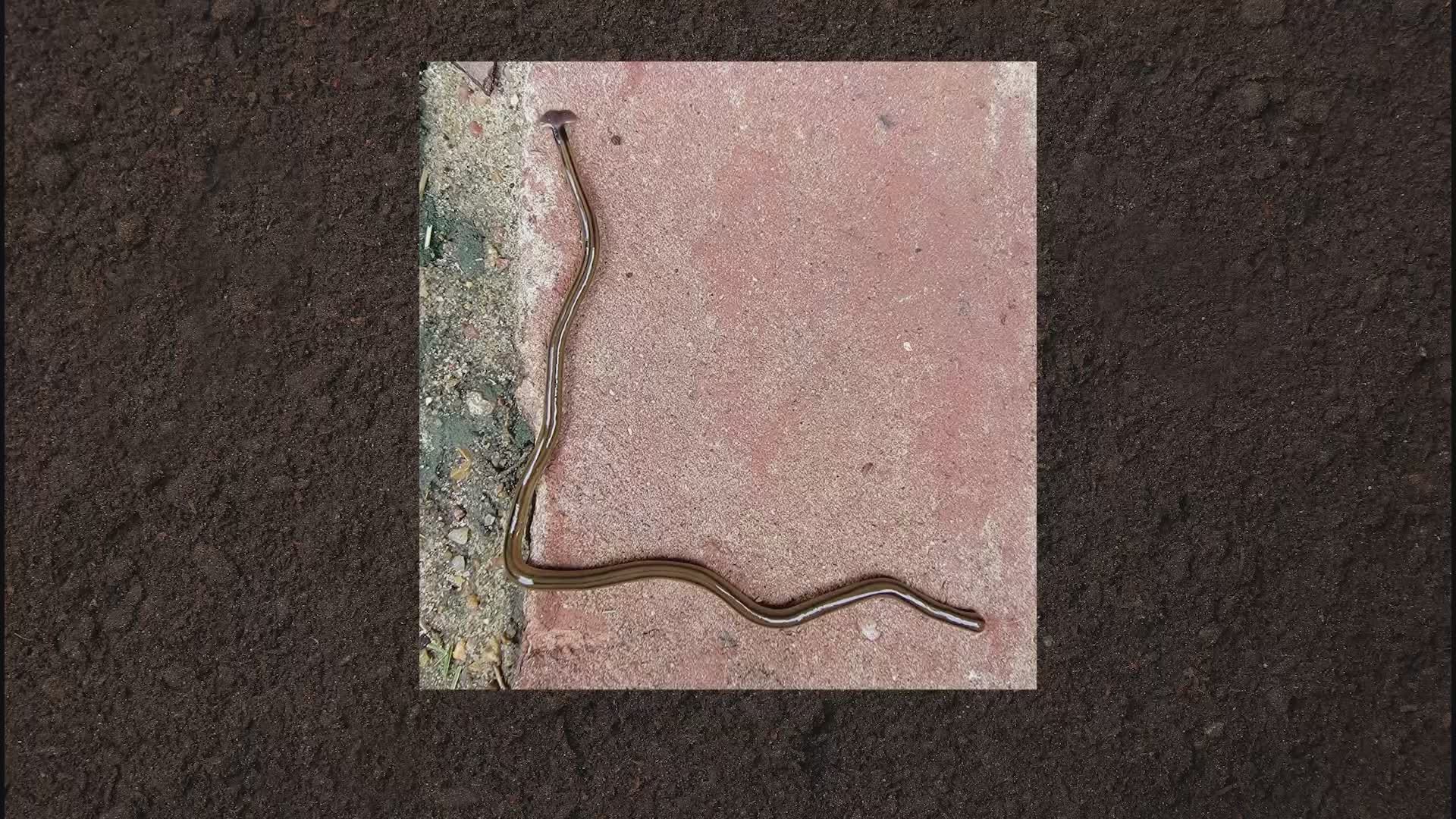HOUSTON — It’s the stuff of nightmares: slimy worms that can grow over a foot long, irritate your skin and even come back from the dead.
Now the hammerhead flatworms recently seen in North Texas have been spotted in the Houston area. No real surprise since they love rain, heat and humidity.
The weird worms get their name from the shape of their heads and are also called shovelheads or arrowheads.
The Texas Invasive Species Institute says hammerheads are predators of the kindler, gentler earthworms that are necessary for the survival of forests, crops and gardens.
They track them down, disable them by covering them with slime and eat them by stretching their “mouth” over part of the earthworm’s body and digesting it, according to Dr. Blake Layton Jr., an entomology expert with Mississippi State University.
The toxins they use to paralyze the earthworm can cause skin irritation in people and animals can get sick if they eat the worms. Hammerheads also have the potential to carry parasites.
Oh, and did we mention they’re like little zombies that can grow new heads if you try to kill them?
"Don't cut it up," Morgan-Olvera with TISI told WFAA, our sister station in Dallas. "It will regenerate. So, if you chop it up into two pieces, you'll get two worms."
Same thing happens when they reproduce asexually.
“A portion of the rear of the worm breaks off and grows a new head, producing a new flatworm genetically identical to its parent, a literal ‘chip off the old block,’” Dr. Layton explained.
Like little vampires, they avoid the sun and prefer to hide in dark, secluded areas. They’re mostly active at night but might also slither out on cloudy days, Dr. Layton explained.
After heavy rains, you might see them on driveways, patios or sidewalks.
You can get rid of them by sprinkling them with salt, citrus oil or vinegar.
Don’t touch it even after it’s dead. Use gloves or a paper towel to put them in a plastic bag to make sure they don’t crawl away. Immediately wash your hands with soapy water and rinse them in alcohol or a hand disinfectant.
If you find a hammerhead flatworm, Morgan-Olvera said to send a photo and the address where it was found to invasives@shsu.edu so they can track the data.
Follow news and happenings across Texas. Sign up for the daily Lone Star Journal

